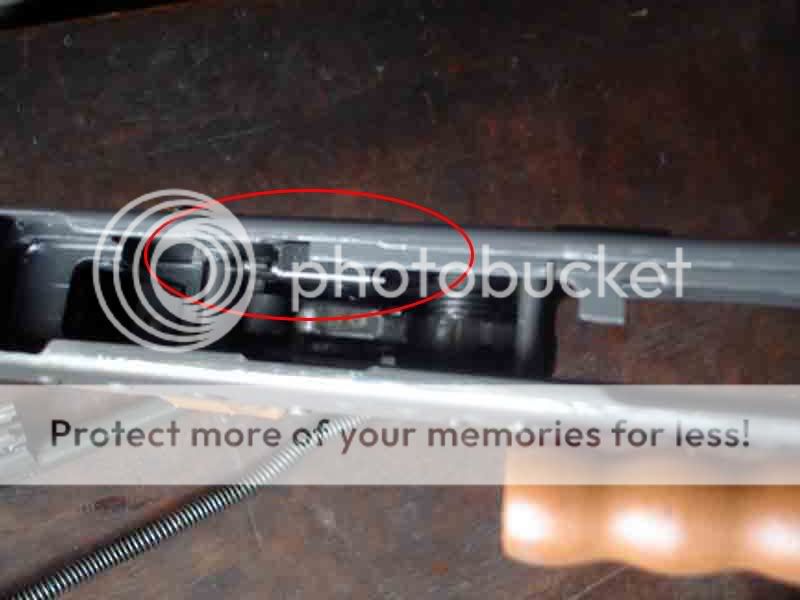Last week I was given an opportunity to fiddle and inspect a bunch of INSAS rifles in detail by the local police.
I thought it'd be a good opportunity to dissect the INSAS and dispel some myths and misconceptions about it.
So with the two line preamble, I take great pleasure in presenting to the gun community a modest Technical Treatise of the INSAS Rifle 5.56mm 1B1 The specimen in this study was factory fresh and manufactured by the R.F.I (Rifle Factory Ishapore), West Bengal.
To start with, we shall touch up a bit on its pedigree. Common misconceptions of the INSAS's origins and designs range from it being a Galil clone to a hotch-potch of the FAL, M-16, AK & G3... none of these are in-fact entirely accurate.
The evolution of the INSAS, in fact, closely follows the development of FN 5.56mm Rifles/Carbines with an added Kalashnikov flavor to aid cheap and mass production.
I think one can clearly see why the notion of an FAL gas system clone appeared and stuck on. The early developmental versions of the INSAS sported a gas block and fore sight assembly very similar to the FAL and the SLR1A. The Gas plug design is a common to all. However one should remember that the ill fated FN CAL 5.56mm Rifle was a developmental design that included numerous design features from the FAL. Thus in relation to the scale involved (7.62mm to 5.56mm), the more obvious conclusion would be that the early to mid developmental INSAS rifles borrowed the Gas block/plug/Fore sight assembly from the FN CAL...and not the FAL. The picture below, which I cobbled together, was sourced from various net sources- you can see the obvious relations.

However, since then, they incorporated a few changes, most probably (as I see) with a view to simplify manufacture. The current FNC is essentially a very simplified FN CAL, with improvements and design elements altered to suit quick and less expensive manufacture. The gas block & fore sight assembly was simplified to be made from simple forgings or investment castings with the minimum possible machining operations. The current production INSAS 1B1 sports a virtual 100% clone of the assembly. Take a look at the picture below for a comparison of the FNC and the INSAS... also note the general similarity of the entire fore end and the muzzle piece.

The FNC in the above picture is a civilian version with no grenade launching facility or a bayonet lug. Below is a comparison of the muzzle end of the standard military FNC and the INSAS IB1. Note the identical NATO standard 22mm diameter muzzle brakes and grenade launching split rings on both the guns. This seems to be an entirely export oriented feature on the INSAS as I'm not aware of the Indian Army using rifle grenades of this type. The muzzle brake with a radial series of 3 circular ports is common to the INSAS, FNC the CAL and the FAL...
The gas blockage for grenade launching is achieved by rotating a sheet metal bracket/latch that folds away behind the fore sight post. This is called an "
Alidade". Rotation is approximately 90 degrees. This is identical in the FNC and the INSAS. The one on the INSAS is made of a very flimsy half mm sheet... it's actually flimsy enough to deform slightly every time you rotate it. The pictures below illustrate the Alidade in both positions.
The top edge of the Alidade has a "v"notch that becomes visible when it is raised to the gas-blocked (grenade launching) position. This can be aligned with a 'foresight' bead on the grenade to 'aim' the projectile. The picture below illustrates the V notch.
The Immediate area behind the Gas block & Fore-sight assembly houses a gas regulator (Circled area in image below) It operated in the same way the FNC does but the lug and locking plunger has been shifted to the front. In the FNC this is in an extension of the breech trunnion just above the chamber. It has two positions Low and High. Default setting is Low.(11'oclock as in the picture below)
It is commonly believed that the
cocking/charging handle of the INSAS is a copy of the H&K G3/HK33/53 series of rifles. The H&K influence goes only as far as the positioning of the cocking handle - i.e. Ahead of the breech, left side 11 o'clock position with the muzzle away from you. In execution, the design is a virtual lift of the charging handle assembly of the 7.62mm SLR 1A. This has been achieved by extending the AKM type trunnion about 4 inches forward. The 'T'-slots for the cocking slide is machined on to this trunnion extension. In my opinion this seems to have complicated the manufacturing process because of the added machining operations. Also you cannot rotate the cocking handle to lock back like in the H&K rifles. In its rear most position the slide interferes with the opening and closing of the pivoted receiver cover. The picture below illustrates the relationship between the three rifles types.

Moving on rearward to the mid section of the INSAS, one can see an unmistakable AKM/Kalashnikov influence. The receiver is of pressed sheet metal of approximately 1mm thickness. It follows the traditional boxy AKM type receiver design with the prominent dimple over the magazine well. The dimple on the INSAS is more angular than that of the AKM. Below is the right hand side of the receiver. With a prominent SLR type carrying handle that's redundant and hardly ever used. Personally, I think this feature is a useless money sink in a 5.56mm rifle. Also missing in the INSAS is the large AK type selector lever. This has been substituted by a virtual clone of the FNC selector lever on the left side of the receiver.




























